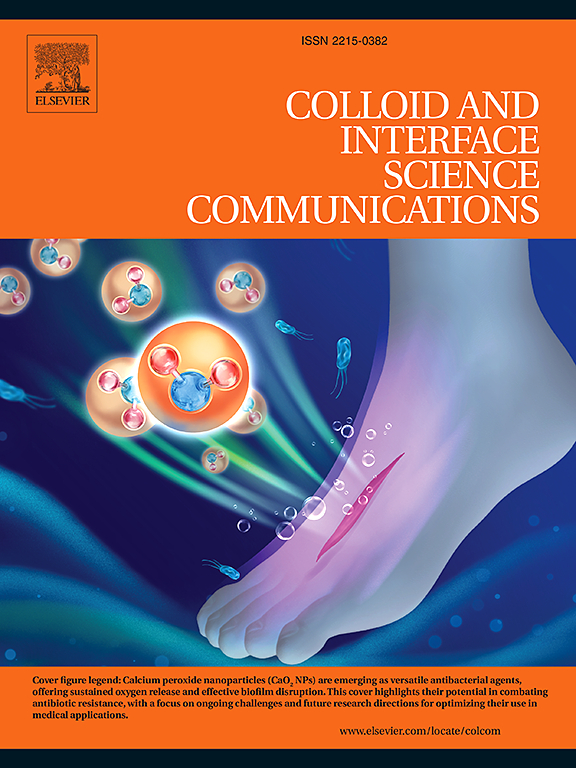利用纳米颗粒浓度和磁场控制超顺磁性纳米Fe3O4朗缪尔薄膜的结构
IF 4.7
3区 材料科学
Q2 CHEMISTRY, PHYSICAL
引用次数: 0
摘要
我们研究了如何改变由疏水超顺磁性Fe3O4纳米颗粒(NPs)在空气-水界面形成的结构,以获得具有所需结构的薄膜。利用Langmuir槽在水中制备NP膜,并将其沉积在玻璃基板上。通过表面压力-面积/粒子等温线和原子力显微镜图像,研究了NP扩散溶液浓度(CNP)和磁场强度对NP聚集的影响。在没有磁场的情况下,NPs聚集形成大而不均匀的畴。随着CNP的增加,结构域的大小和非均匀性增加,这一结果可以通过增加吸引疏水相互作用来解释。磁场减小了这些畴的尺寸和非均匀性,这一结果可以用方向性磁力来解释。NP膜的结构取决于CNP和磁场强度。随着CNP的增加,磁场引起的结构变化更加明显。本文章由计算机程序翻译,如有差异,请以英文原文为准。

Use of nanoparticle concentration and magnetic fields to control the structures of superparamagnetic Fe3O4 nanoparticle Langmuir films
We investigated how structures formed by hydrophobic superparamagnetic Fe3O4 nanoparticles (NPs) at air-water interfaces could be changed, in order to achieve films with the desired structure. NP films were prepared on water using the Langmuir trough, and deposited onto glass substrates. The effect of the NP spreading solution concentration (CNP) and the magnetic field strength on the NP aggregation were determined from surface pressure-area/particle isotherms and Atomic Force Microscope images. In the absence of a magnetic field, the NPs aggregated to form large and heterogeneous domains. The size and non-homogeneity of the domains increased as CNP increased, a result explained by increasing attractive hydrophobic interactions. A magnetic field decreased the size and non-homogeneity of these domains, a result explained by a directional attractive magnetic force. The NP film structure depended on CNP and the magnetic field strength. Structural changes by the magnetic field became more visible as CNP was increased.
求助全文
通过发布文献求助,成功后即可免费获取论文全文。
去求助
来源期刊

Colloid and Interface Science Communications
Materials Science-Materials Chemistry
CiteScore
9.40
自引率
6.70%
发文量
125
审稿时长
43 days
期刊介绍:
Colloid and Interface Science Communications provides a forum for the highest visibility and rapid publication of short initial reports on new fundamental concepts, research findings, and topical applications at the forefront of the increasingly interdisciplinary area of colloid and interface science.
 求助内容:
求助内容: 应助结果提醒方式:
应助结果提醒方式:


